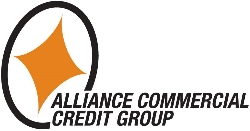Cash Flow is the life-blood of a successful business. Have you checked your pulse lately?
Life always proves the statement that you don’t know what you’ve got ‘til it’s gone. The ramifications of your business’ cash flow probably won’t be understood until you find yourself in the middle of a negative cash-flow storm. Two types of situations regarding this can put a company out of business:
- You have negative cash flow even though your company is profitable
- You have positive cash flow but your company isn’t profitable
Most simply, cash flow can be defined as money coming in, going out, with some being leftover at the end of the month. It sounds so easy, but if you’ve been in business long you realize there’s a lot more affecting your cash flow to complicate it.
Sales play the biggest role in affecting your cash flow.
Fact is, sales are unpredictable. When they increase, your business needs more cash to continue momentum. This means purchasing more inventory, increasing payroll, adding staff, etc. This additional demand can create a backwash of negative cash flow even in the midst of what seems like a surge of profitability.
Being cash-flow negative for too long will detrimentally affect your business. You may have to delay paying vendors, or as the owner skip your own paycheck, or even skipping payroll taxes. Borrowing money from Uncle Sam by skimping him is a costly solution that will multiply your problems.
Even a business operating at a profit can have cash-flow issues.
In the moment, it’s hard to identify this problem. Hindsight is 20/20, but looking in the rearview mirror doesn’t help you see what’s coming or what’s happening right now. Profit and loss statements will always only show you what just happened, not what to expect.
In manufacturing, construction, and fabrication industries it ca be much more difficult to pin down whether a job is profitable or not since many are bid on a project-basis, not a time- ad material-basis. Undercharging and underbidding are very common problems that often lead to lack of profitability.
If a business is operating at a loss, one result is that the difference between their accounts receivable and accounts payable will shrink. This spread is called working capital. A ratio of 3:1 means you have good breathing room. But as that ratio falls, your working capital gets smaller, and the stress of finances grows.
If you are cash-flow positive but still losing money, what is the solution?
Simply: get help. It I very common for a business owner to have excellent knowledge in their trade, but to not be equally skilled at sales, accounting, or managing people. Recognizing what your business needs that you may lack gives your business the ability to grow. In business, it shouldn’t matter how the room is swept, so long as it is swept. Ego has no relevance; don’t be afraid to ask for help.
So then how does a profitable business correctly manage their growing sales curve?
By having a pressure release valve. For your business, this is called a line of credit. As you have probably experienced, average turnaround of your accounts receivable is 45 days, give or take. But how often do you need to pay your bills? Every 30 days. Funny how that double standard works, but if you want good credit you need to be timely in paying your obligations.
A line of credit is what will help even out the discrepancy between getting paid 9 times a year and paying out 12 times a year. A good rule of thumb is to have a line of credit 1.5 times your average accounts receivable if they are turning on a 45-day average (2 times if it is an average of 60 days).
Now knowing that, all you need to do is march into your local bank and apply, right? It may not be as easy to get as you think. There are many factors that a bank takes into account before approving you, such as time in business, credit scores, type of industry, collateral, retained earnings, equity invested in the business, business management… Just to name a few. It can be a time-consuming, frustrating, and unsuccessful process, to say the least.
If you find you don’t have the time or patience to jump through the bank’s hoops, call us.
We will help you package and place your loan for a very reasonable fee. If you can’t qualify for a traditional line of credit from a bank, there is a financial world outside of banks. It’s called asset-based lending or factoring. Even in business college, very little time is spent on this topic so don’t be surprised if you haven’t heard the term. The easiest way to be educated is to find a business loan expert, and we are here to help you. Give us a call, and we can explain all the ins and outs of these options and more.

